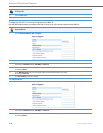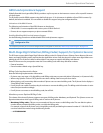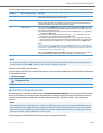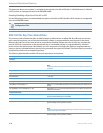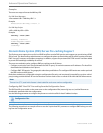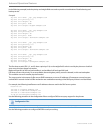
Advanced Operational Features
6-32 41-001343-02 REV04 – 05.2014
Configurable SIP P-Asserted Identity (PAI)
The IP Phones support a private extension to SIP for Asserted Identity within trusted networks (as defined in RFC 3325).
This feature allows a network of trusted SIP servers to assert the identity of authenticated users, and verify that phone
messages originate from a Trusted Identity. Upon receiving a message from a caller in the Trusted Network, the IP phone
reads the contents of the P-Asserted-Identity (PAI) header field and displays it on the phone UI. This field contains a more
accurate description of the caller identity (extension/phone number) than is contained in the SIP message.
When an IP phone receives an incoming call, the IP phone performs the following actions:
• Checks to see if the incoming call is from a registered proxy server.
• If the call is forwarded via a registered proxy server, then the message has already been verified and authenticated by
the server. The caller is part of the Trust Network. The IP phone UI displays the caller information contained in the PAI
header.
• If the call is not forwarded via a registered proxy server - and therefore is not a “Trusted Entity” - the IP phone UI does
not display any trust information contained in the PAI header.
The phones provide the ability for the Administrator to enable or disable the display of P-Asserted Identity (PAI) informa-
tion on the phone using the following parameter in the configuration files:
• sip pai
Enabling/Disabling P-Asserted Identity (PAI)
Use the following procedure to enable/disable PAI.
Notes:
• The phones support PAI header in the UPDATE message, according to draft-ietf-sipping-update-pai-00. This feature
is always enabled.
• If an UPDATE is received with a PAI header from a trusted source, the phone updates the display with this information.
The phone ignores any PAI received from untrusted entities.
Configuration Files
For the specific parameter you can set in the configuration files, see Appendix A, the section, “P-Asserted Identity (PAI)” on pageA-212.



